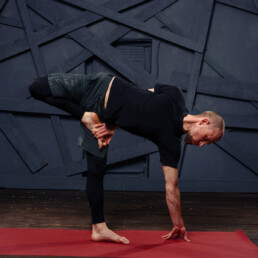
I always look at how modern life can be so ironic! For all of us living through the current world wide technological revolution, our pace of life and productivity seem to only be continually increasing. But in spite of our huge rises in daily productivity, the necessity to use our bodies for the purposes of that productivity are becoming significantly redundant. Our increasingly sedentary lifestyles are setting us up for a host of future health problems such as obesity, heart disease, postural issues, chronic pain, anxiety and depression to name a few.

Most of our sedentary behaviours are normalised and go unnoticed such as driving the car to run errands, taking a short bus ride to work, ordering food online, sitting at the computer or watching TV. Some of us combat this with exercise and think that if we do our daily exercise session for an hour everyday, then we are fit and healthy. I hear this a lot from people I speak to. Current research has shown that sitting for two hours consecutively can significantly affect how responsive our muscles are to processing sugar and it can also negatively interfere with the fat burning capability of your muscles as well. Now whilst exercising for an hour everyday may make some steps towards reversing the negative effects of prolonged sitting, research is showing that exercising for only an hour everyday is not enough! The long term solution seems to be more along the lines of moving more often, and at varying intensities. There are studies which are showing that our long term health may be better served with three shorter walks per day (around ten minutes in length) as opposed to taking a long thirty minute walk once a day.

In these current times, many of us share the mindset of trying to maximise the efficiency and effectiveness of everything that we do. The result is our increasing participation of faster, more stressful bouts of exercise, so we can quickly get back to our hectic lives of over working. It also results in not prioritising vital restorative activities such as mental recuperation or sleep, and constantly being on the move in order to complete our never ending list of things to do. This mindset is also apparent in our ever changing technology and variety of gadgets which satisfy most of our needs instantly. We are used to quick fixes, fast results and our lives made easier and more comfortable.
Not so long ago we used to move in nature and not gyms. We used to move to find food in order to survive. We would interact with our environment and move naturally with our whole body using a blend of movement elements such as mobility, flexibility, strength, conditioning, speed, balance and coordination, to best navigate any obstacles thrown our way. We were completely connected to movement and our natural environment, without ever engaging within the mindset of exercise, burning calories or toning our muscles for aesthetics. Our bodies still have this innate need to move today.

What I’ve come to learn through my own movement journey over the years is that all exercise is movement, but not all movement is exercise. I invite you to look at what non-exercise movements you choose to do in your daily life, for example, playing with your children on the floor, choosing to take the stairs rather than the escalator, walking somewhere rather than driving. There’s so many opportunities for movement in our daily lives, even the littlest bouts count. Current evidence shows that the total volume of moderate-to-vigorous physical activity is related to many health benefits; bouts of a prescribed duration are not essential. So choosing movement adds up, it all matters.

I would love to help you live a more movement rich lifestyle and recognise any sedentary patterns and behaviours that could be altered to bring more movement into your life with minimum effort for maximum benefit.
A few ideas on how you can introduce more movement into your day for better health and wellbeing!
– Play with your children and/or animal friends.
– Add movement into your commute. If taking public transport walk to the farthest stop before getting on, or get off a stop early to walk the remaining distance. If driving, park at a spot further away.
– Opt to take the stairs over lifts or escalators
– When food shopping, park further away or don’t drive at all, walk or bike instead. Carry bags, load/unload shopping bags.
– Carrying laundry up or downstairs (walking whilst carrying load).
– Gardening (move around deep squats, kneeling, on all fours)
Kirsty is the resident Sports Therapist and one of the specialist movement experts here at Evolution Rehab. If you are interested in finding out some advise about how to squeeze more movement into your life, or find out about our Healthy Movers Program, feel free to contact Kirsty at evorehab@gmail.com. Better still, why not book a consultation with Kirsty directly via our website (evolutionrehab.com) and take those steps to moving better, feeling healthier and having more energy back into your life again.
![]()



